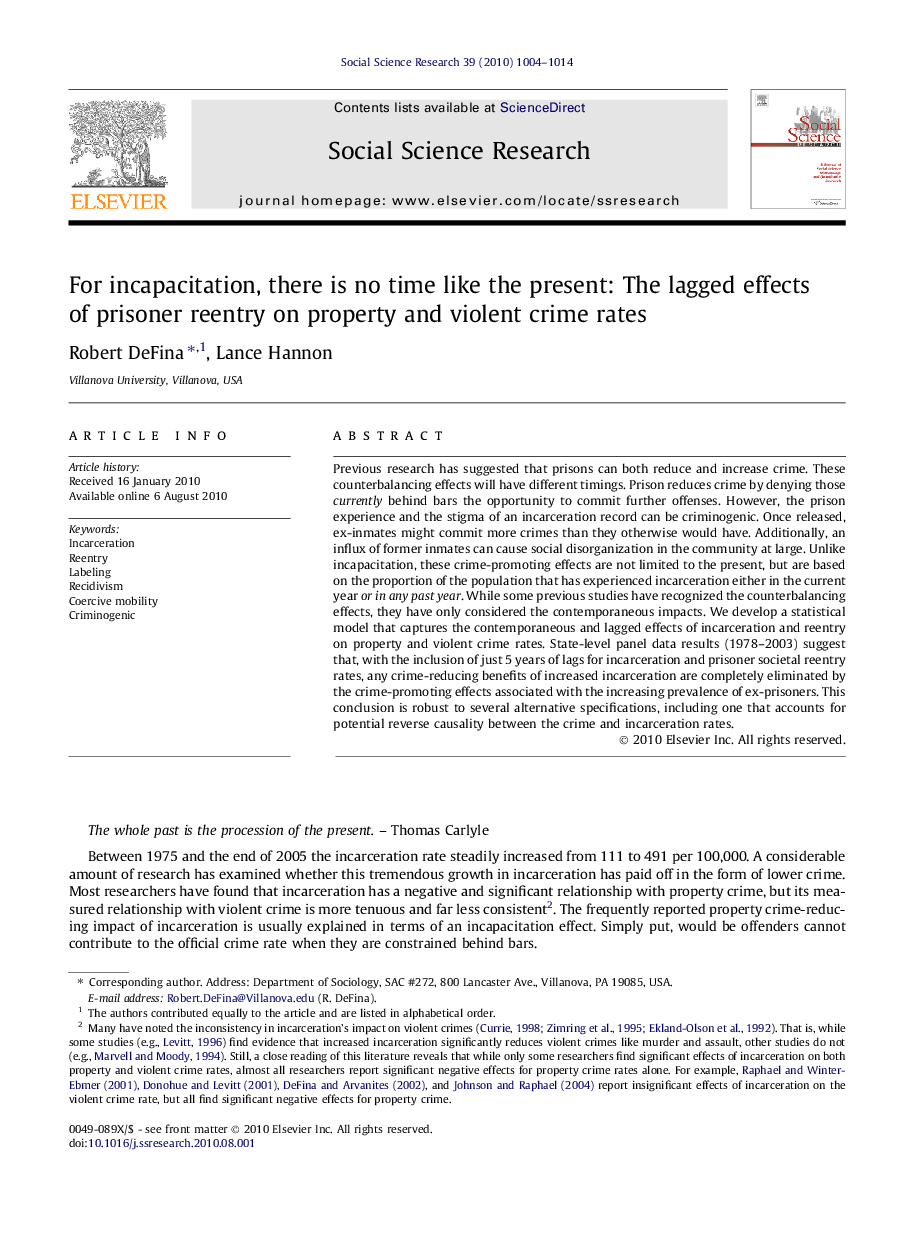| کد مقاله | کد نشریه | سال انتشار | مقاله انگلیسی | نسخه تمام متن |
|---|---|---|---|---|
| 956171 | 928314 | 2010 | 11 صفحه PDF | دانلود رایگان |

Previous research has suggested that prisons can both reduce and increase crime. These counterbalancing effects will have different timings. Prison reduces crime by denying those currently behind bars the opportunity to commit further offenses. However, the prison experience and the stigma of an incarceration record can be criminogenic. Once released, ex-inmates might commit more crimes than they otherwise would have. Additionally, an influx of former inmates can cause social disorganization in the community at large. Unlike incapacitation, these crime-promoting effects are not limited to the present, but are based on the proportion of the population that has experienced incarceration either in the current year or in anypast year. While some previous studies have recognized the counterbalancing effects, they have only considered the contemporaneous impacts. We develop a statistical model that captures the contemporaneous and lagged effects of incarceration and reentry on property and violent crime rates. State-level panel data results (1978–2003) suggest that, with the inclusion of just 5 years of lags for incarceration and prisoner societal reentry rates, any crime-reducing benefits of increased incarceration are completely eliminated by the crime-promoting effects associated with the increasing prevalence of ex-prisoners. This conclusion is robust to several alternative specifications, including one that accounts for potential reverse causality between the crime and incarceration rates.
Journal: Social Science Research - Volume 39, Issue 6, November 2010, Pages 1004–1014